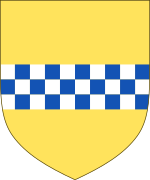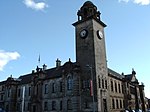The 20 km long Clyde Waterfront is a section of the River Clyde in Scotland that runs from Glasgow Green in the city's center to Dumbarton on the Firth of Clyde. This is one of Britain's largest urban redevelopment initiatives, with over 200 projects on both banks of the Clyde. [1]
Projects are underway all across the Clyde Waterfront neighborhood to change local commerce, housing, tourism, and infrastructure. The planned public and private investment in Clyde Waterfront as of 2008 was pegged at £5–6 billion. [2]
The Clyde Waterfront Regeneration project is an ongoing initiative aimed at transforming the waterfront area of Glasgow, Scotland. The project was launched in 2003 and is a long-term effort that involves a range of developments and improvements.
Some of the key aspects of the Clyde Waterfront Regeneration project include:
New commercial and residential properties: The project has involved the construction of new buildings, including office spaces, residential properties, and hotels. Some notable developments include the Riverside Museum, the Hydro arena, and the Glasgow Science Centre Tower.
Public spaces: The project aims to create more public spaces along the waterfront, including parks, walkways, and cycle paths. The Glasgow Harbour development includes a riverside promenade, while the Pacific Quay area features a public plaza and landscaped areas.
Infrastructure improvements: The project has also involved significant infrastructure improvements, including the upgrading of roads, bridges, and public transport links. The Clyde Arc, also known as the Squinty Bridge, was built as part of the project and provides a new pedestrian and cycle route across the river.The Clyde Waterfront Regeneration project is a collaboration between Glasgow City Council, Scottish Enterprise, and other partners. It is seen as a key driver of economic growth in the area and has already attracted significant investment from both public and private sectors.
As well as supporting inward investment and tourism, the aim of the regeneration of the Clyde is to benefit local communities. It is intended that local people will benefit from the improvements to transport and leisure facilities, shops and businesses, and from new jobs coming into the area. An estimated 50,000 new jobs will be created as businesses relocate in the area and more housing is built. Re-training is vital and a range of support is available locally to make sure residents can exploit the new opportunities as they arise.







